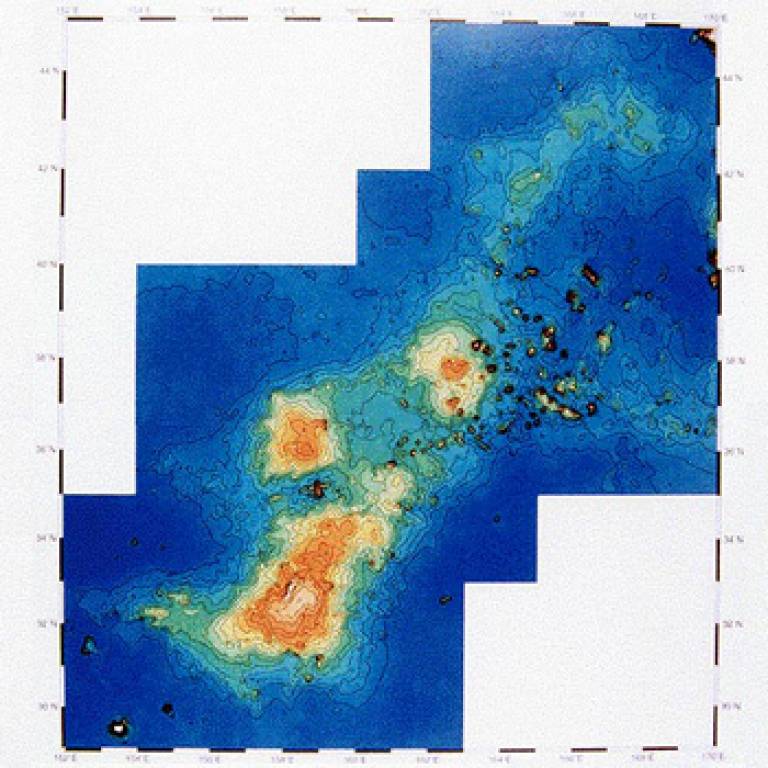PhD student to investigate giant underwater volcano
26 August 2009
Links:
 es.ucl.ac.uk/" target="_self">Earth Sciences
es.ucl.ac.uk/" target="_self">Earth Sciences
A PhD student from UCL Earth Sciences is joining an expedition to investigate a giant underwater volcano in the Pacific Ocean.
Kate Littler will spend two months aboard the JOIDES (Joint
Oceanographic Institutions for Deep Earth Sampling) Resolution as
shipboard sedimentologist.
The expedition is being run by the Integrated Ocean Drilling Program
(IODP), which is an international marine research program that explores
Earth's history and structure recorded in seafloor sediments and rocks.
The aim of the expedition is to drill and recover igneous rocks from
the Shatsky Rise, which erupted in the ancient Pacific about 200
million years ago, and to investigate how this huge structure was first
formed.
The Shatsky Rise is about the size of Japan or California and represents one of the largest oceanic plateaus on Earth.
Ms Littler will help to describe and interpret the layers of marine
sedimentary rock that cover the plateau, which sits under 2 to 4 km of
water.
The rocks - a mixture of limestone, marl and chert - were formed from material sinking out of the water above.
Ms Littler said: "The limestone and marl layers contain many marine
microfossils that can tell us about both the age of the rocks (when
they were deposited) and possibly the type of oceanic environment they
were living in at the time.
"These rocks also contain important geochemical information that we can
interpret in terms of ancient oceanography and climate. I will be
sailing as a shipboard sedimentologist and one of my jobs will be to
describe and interpret these sedimentary rocks once they are recovered
from the seafloor".
"My particular interest is the study of Lower Cretaceous sediments
(about 130 million years old), which are some of the oldest rocks we
are likely to recover on the expedition. I will look at their stable
isotopic composition and organic geochemistry when I get back to dry
land, to try to gain more information about this important period in
Earth's history."
The JOIDES Resolution sails from Yokohama, Japan, on 5 September and is
scheduled to dock in Townsville, Australia, on 4 November.
For more information follow the link above.
Image: Colour contour map of the southern part of Shatsky Rise (source: NASA)
UCL context
UCL Earth Sciences is one of the oldest and largest centres for earth and planetary sciences in the UK. Its research spans a diverse range of activities including crustal processes, Earth and planetary evolution, mineral physics, palaeobiology and palaeoclimatology, polar observation and modelling, natural hazards, environmental geochemistry and sedimentology. In the 2008 Research Assessment Exercise the department was one of only three in the UK to have an average score higher than 3.0, underlining its all-round excellence.
Related stories:
Antarctic glacier thinning at alarming rate
Earthquake experts investigate Italian disaster zone
 Close
Close

